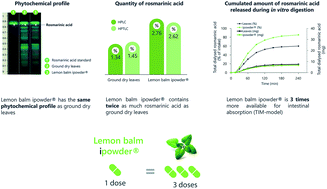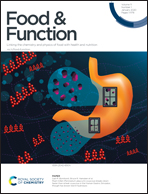Benefits of the ipowder® extraction process applied to Melissa officinalis L.: improvement of antioxidant activity and in vitro gastro-intestinal release profile of rosmarinic acid
Abstract
The objective of this study was to evaluate the benefits of a new extraction process, the ipowder® technology, applied to Melissa officinalis L. Compared to M. officinalis ground dry leaves, the ipowder® had a similar phytochemical fingerprint but contained twice the concentration of rosmarinic acid (by HPTLC and HPLC) and had a two-fold greater antioxidant activity (DPPH* method). In vitro digestion experiments (TIM-1 model) showed better availability of rosmarinic acid for intestinal absorption with the ipowder® than with ground dry leaves, manifested by a three-fold reduction in the quantity of ingested product needed for delivery of the same amount of rosmarinic acid into the upper gastro-intestinal tract. This study shows that the ipowder® technology preserves all the original plant compounds intact while making some active ingredients more accessible and available to exert their effects. To obtain a given effect, the amount of ipowder® extract to ingest will therefore be lower; a reduction in the daily dosage will be more convenient for the patient and will improve patient compliance with supplementation.

- This article is part of the themed collection: Food & Function Recent Open Access Articles


 Please wait while we load your content...
Please wait while we load your content...